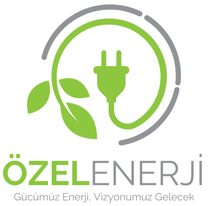How to Fast Charge Electric Vehicles?

How to Fast Charge Electric Vehicles?
Charging electric vehicles quickly is typically achieved using specially designed fast charging stations, also known as DC charging stations. A DC charging station converts AC current to DC current to charge the vehicle.
1. Selecting
a Fast Charging Station:
If you want to fast charge your electric vehicle, you usually need access to fast charging stations. These stations are specialized devices capable of charging your electric vehicle's battery at higher power and in less time.
2. Using
Protocols like CCS, CHAdeMO, or Tesla Supercharger:
Fast charging stations typically support specific charging connection standards. Various standards like CCS (Combined Charging System), CHAdeMO, and Tesla Supercharger are available. It's important to check your electric vehicle's connection type and supported standard.
3. Vehicle
Connection:
At fast charging stations, you'll need to connect your vehicle's charging port to the station. This is usually done using a specialized charging cable provided by the vehicle manufacturer.
4. Payment
and Activation:
Many fast charging stations are integrated with a system for users to make payments. Different payment methods such as credit card, mobile app, or RFID card may be used. Usually, an activation process is required to use the station.
5.
Monitoring the Charging Process:
While your electric vehicle is charging, you can monitor the progress of the charge via a screen or mobile app. This provides information on how long the charge will continue and how much of the battery is filled.
Fast charging
stations typically offer high-power charging capabilities allowing for charging
times ranging from a few minutes to half an hour. However, charging speed can
vary depending on the specifications of the charging station, the vehicle's
capacity, and the state of the battery.
What's the Difference Between AC and DC Electric Vehicle Charging Stations?
The fundamental
difference between AC (Alternating Current) and DC (Direct Current) electric
vehicle charging stations lies in how electrical current is transported and
delivered to the vehicle's battery. Here's a list explaining the main
differences between AC and DC charging stations:
1. Type of
Current:
- AC Charging Stations: Use alternating
current (AC). AC electricity is a current in which the direction of energy flow
changes at regular intervals. In this type of charging, AC current is converted
to DC using the vehicle's converter.
- DC Charging Stations: Use direct current (DC). DC electricity is a current that flows consistently in one direction.
2. Charging
Time:
- AC Charging Stations: Typically operate at
lower power and have longer charging times. Home charging stations and
low-powered AC charging stations fall into this category. AC charging stations
can range from 3.7 kW, 7.4 kW, 11 kW, and 22 kW.
- DC Charging Stations: Can operate at high power levels and provide faster charging. Therefore, they are preferred, especially during long-distance travel. DC charging stations can range from 30 kW and go up to 300 kW or more.
3. Household
Installation and Light Charging:
- AC Charging Stations: AC charging stations
connected to the home meter are typically used for light charging needs.
- DC Charging Stations: Specifically designed to meet fast charging needs and generally require larger infrastructure and facilities.
4. Charging
Cable and Adapters:
- AC Charging Stations: Typically use AC
charging cables capable of handling up to 22 kW of power.
- DC Charging Stations: Usually require thicker and specially designed DC charging cables capable of handling larger power capacities. These cables are designed to transmit higher powers.
5. Cost:
- AC Charging Stations: Generally more
cost-effective and more widely available.
- DC Charging Stations: More complex and
expensive due to their high-power capacity and fast-charging features.
How Does a Fast Charging Station Work?
Both types of
charging stations can be used to charge electric vehicles, but the preferred
option can be determined based on the usage scenario, charging speed, and the
charging standard supported by the vehicle.
The working principle of DC (Direct Current) charging stations is to provide direct current (DC) energy directly to the electric vehicle's battery. These charging stations have the capacity to charge the vehicle's battery more quickly and are often used during long-distance travel. Here's the basic working principle of DC charging stations:
1. Energy
Transmission:
- DC charging stations typically receive
alternating current (AC) from the electrical grid.
- These stations convert this AC electricity to direct current (DC).
2. Charging
Control:
- The charging station uses communication protocols to control the charging process of the electric vehicle. This allows monitoring of the vehicle's charging capacity, battery status, and other important parameters.
3. Safety
and Protection:
- DC charging stations include safety and battery protection measures. These measures are designed to prevent damage to the battery in situations such as overvoltage, overcurrent, or overheating.
4. Charging
Connector Connection:
- Electric vehicles use a special charging
connector to connect to the DC charging station.
- The charging station detects the vehicle's charging connection and initiates controls to ensure the correct connection.
5.
High-Power Charging:
- DC charging stations can typically operate
at high power levels. This allows them to deliver more energy to the electric
vehicle's battery in a shorter amount of time.
- With fast-charging capabilities, drivers can cover longer distances with shorter breaks.
6. Battery
Transmission:
- The DC charging station initiates the
charging process by transmitting DC energy to the vehicle's battery.
- When the battery reaches the desired charge level or a predetermined capacity, the charging station terminates the charging process.
DC charging
stations are often located along major highway networks and in urban centers.
With their fast-charging capabilities, drivers can cover longer distances more
efficiently and utilize their electric vehicles effectively.
Why Choose DC Charging Stations?
DC (Direct Current) charging stations are specialized chargers that enable electric vehicles to be charged faster and more efficiently. Here are the reasons why DC charging stations are preferred:
1. Fast
Charging Capacity:
- DC charging stations typically operate at high power levels, allowing electric vehicle batteries to be charged more quickly. This enables drivers to cover longer distances with shorter breaks.
2.
Long-Distance Travel Capability:
- DC charging stations are often located on highways and main roads to meet the charging needs of electric vehicle drivers on long-distance journeys.
3. Enhanced
Grid Integration:
- DC charging stations come with smart grid integration capabilities. This feature supports intelligent energy management for regulating energy demand and ensuring grid stability.
4. High
Power Capacity:
- DC charging stations can generally handle high power levels. This allows them to deliver more energy to the electric vehicle's battery in a shorter amount of time.
5. Universal
Compatibility:
- Many electric vehicle models have standardized connectors that support DC charging stations. This allows different brands and models to use the same DC charging stations.
6.
Investment in the Future:
- With the proliferation of electric vehicles, DC charging infrastructure is continuously evolving. DC charging stations offer the advantage of adapting to future technological developments.
7. Weather
Resistance:
- DC charging stations are typically
designed to withstand outdoor conditions, making them usable in a wide range of
environmental conditions.
For these
reasons, electric vehicle users and grid operators prefer DC charging stations
to charge quickly and effectively during long-distance travel.
Where Are Fast Charging Stations Used?
DC (Direct
Current) charging stations are strategically installed in specific locations,
typically based on the needs and travel patterns of electric vehicle users.
Here are common locations where DC charging stations are installed:
1. Highways
and Roadways:
- Positioned along highways and
major roads to meet the charging needs of electric vehicle drivers on long-distance trips. This allows drivers to quickly charge their vehicles during long journeys.
2. Urban
Centers and Shopping Malls:
- Located in densely populated areas such as city centers, shopping malls, and commercial districts to provide electric vehicle users with charging opportunities within cities.
3. Parking
Lots and Open Spaces:
- DC charging stations located in outdoor parking lots, shopping mall parking lots, residential areas, and business districts are used to charge vehicles parked for extended periods.
4.
Restaurants and Rest Areas:
- DC charging stations can be installed at restaurants, cafes, and rest areas to allow drivers to charge their vehicles while taking meal breaks.
5. Tourist
and Recreational Areas:
- DC charging stations installed in tourist destinations, vacation spots, and recreational areas provide electric vehicle users with charging options during their travels.
6. Public
Transportation Hubs:
- Charging stations placed near bus stops, train stations, and other public transportation hubs support both public transit vehicles and individual electric vehicle users.
7. Hotels
and Accommodation Facilities:
- Hotels and accommodation facilities can install DC charging stations to provide guests with the opportunity to charge their electric vehicles during their stay.
DC charging
stations are strategically positioned to provide coverage over a wide
geographic area. These stations encourage the adoption of electric vehicles by
offering drivers a reliable charging infrastructure for long-distance travel
and urban commuting.

1 Comment(s)
Sitemize hangi şarj aleti uygun olur
Bizimle 05303438836 numaralı telefondan irtibata geçin sitenizin altyapısına bakıp karar verelim.
Leave a Comment